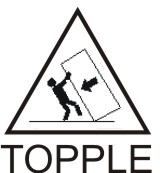1 Introduction
This manual presents an overview of the INP and AINPQ features that allow wireline and wireless operators to support service provider portability in telephone networks in locations worldwide except North America. The INP and AINPQ features allow subscribers in ITU networks to change to a new service provider while retaining their original phone number.
The Service Portability feature can be used with INP and AINPQ to allow subscribers to change to another technology within the same service provider.
The S-Port Subscriber Differentiation feature can be used with Service Portability for INP Message Relay, to allow use of ASD digits to provide an additional Routing Number per own-network subscriber. (ASD digits, if provisioned, are used in place of GRN digits.)
Overview
This manual presents an overview of the following features that allow wireline and wireless operators to support service provider portability in telephone networks in locations worldwide except North America. The following features allow subscribers in ITU networks to change to a new service provider while retaining their original phone number.
-
INP - INAP-based Number Portability
-
AINPQ - ANSI-41 Number Portability Query)
The Service Portability feature can be used with the INP and AINPQ features to allow subscribers to change to another technology within the same provider while retaining their original phone number.
The S-Port Subscriber Differentiation feature can be used with Service Portability for INP Message Relay (INPMR) to allow use of ASD digits to provide an additional Routing Number per own-network subscriber. (ASD digits, if provisioned, are used in place of GRN digits.)
The INP Circular Route Prevention feature can be used with INP to detect and prevent circular routes that can occur due to inconsistency across the network.
The INP and AINPQ features have many functions in common. The Message Relay function is the same for both features. Both features support ported variable-length numbers up to 15 digits, without requiring the padding of numbers in the provisioning interfaces. The two features differ in how queries to the Real Time Database (RTDB) are made:
-
The INP feature supports INAP (Intelligent Network Application Protocol) TCAP (Transaction Capabilities Application Part) queries.
-
The AINPQ feature supports ANSI-41 (American National Standards Institute) TCAP queries.
To indicate which functions are common to both features and which are unique to a given feature, the following terminology is used in this manual:
-
INP/AINPQ indicates functions that apply to either or both of the INP and AINPQ features
-
INP, used by itself, indicates function that applies only to the INP feature
-
AINPQ, used by itself, indicates function that applies only to the AINPQ feature
The INP and AINPQ features can be enabled independent of each other, or both can be enabled on one Oracle Communications EAGLE node. Both features are mutually exclusive with North American Local Number Portability (LNP) on an EAGLE node, unless the Dual ExAP Configuration feature is enabled.
Scope and Audience
This manual is intended for anyone responsible for installing, maintaining, and using the INP and/or AINPQ feature of Oracle Communications EAGLE. Users of this manual and the others in the EAGLE family of documents must have a working knowledge of telecommunications and network installations.
Documentation Admonishments
Admonishments are icons and text throughout this manual that alert the reader to assure personal safety, to minimize possible service interruptions, and to warn of the potential for equipment damage.
Table 1-1 Admonishments
| Icon | Description |
|---|---|
 |
Danger: (This icon and text indicate the possibility of personal injury.) |
 |
Warning: (This icon and text indicate the possibility of equipment damage.) |
 |
Caution: (This icon and text indicate the possibility of service interruption.) |
 |
Topple: (This icon and text indicate the possibility of personal injury and equipment damage.) |
Manual Organization
This document is organized into the following chapters:
-
Introduction contains general information about the INP and AINPQ documentation, organization of this manual, and how to get technical assistance.
-
Feature Description describes the functions of INP and AINPQ and the INP and AINPQ message protocols. Use of the INP Circular Route Prevention feature and the Service Portability feature with INP are also described.
-
EAGLE Commands describes the EAGLE commands that support the INP and AINPQ features.
-
INP/AINPQ Feature Configuration describes the commands and procedures used to configure the INP and AINPQ features, the INP Circular Route Prevention feature, the INP local subsystem, and the Service Portability feature.
-
INP/AINPQ Measurements describes INP/AINPQ-related measurements, measurements reports, and methods of collection.
-
INP/AINPQ Maintenance describes INP/AINPQ-related UAMs and UIMs, commands that can be used for maintenance functions; and status and alarm reporting for the EAGLE, Oracle Communications EAGLE Application Processor Provisioning (EPAP), Service Module cards, services, and the local subsystem.
Related Publications
For information about additional publications related to this document, refer to the Oracle Help Center site. See Locate Product Documentation on the Oracle Help Center Site for more information on related product publications.